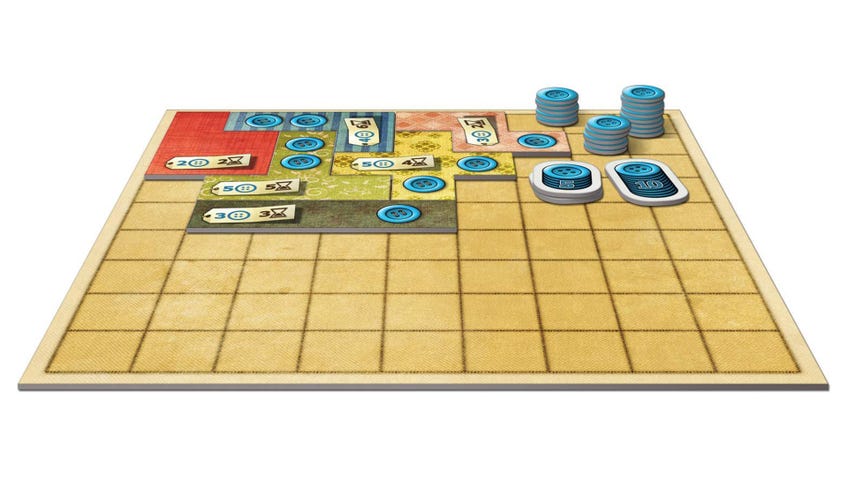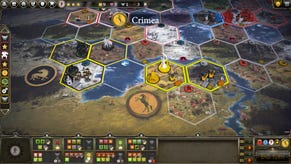How to play Patchwork: board game’s rules, scoring and how to win explained
Reap what you sew.
Patchwork is a puzzle-like tile-placement game for two players by Uwe Rosenberg and the perfect example of not judging a book by its cover - or, in this case, a board game by its theme.
How to play Patchwork
- Player count, game length and overview: What is Patchwork about, how long is it and how many people can play?
- Setup: Get thread-y to play as you choose your player colour and set up Patchwork’s tiles.
- Gameplay rules: Start crafting your quilt as you add tiles to your board and score buttons.
- Game end and scoring: Count up your buttons, see if you scored any bonuses and reveal the winner.
Inspired by quilting - sewing together patches of fabric to create a single made up of different patterns - Patchwork doesn’t exactly inspire much excitement in its opening statement. But trust us, this is a title that anyone who is looking for a chill and potentially highly competitive experience for two people should definitely have in their games library.
Better still, Patchwork takes only five minutes to learn and less than half an hour to finish a match. Grab a needle, some thread and prepare to get stuck in as we teach you how to play.
Player count, game length and overview
Patchwork is a game for two players (and only two players) in which the players compete to create the highest-scoring quilt by placing tiles on their individual player board. Patchwork takes between 15 minutes and half an hour to play, and is suitable for newcomers to the hobby and younger players thanks to its simple rules, short length and colourful presentation. That said, it’s just a great game no matter who you are.
Setup
Choose which side of the time board you’d like to play with and place it in the middle of the table. There is no difference between the sides, choosing a side is simply a matter of aesthetic preference.
Each player chooses one colour to play as - green or yellow - and places the appropriate quilt board in front of them.
Place the quilt pieces in a single-file circle around the table.
Find the only 2x1 piece in the game and place the neutral pawn next to it so that the piece is behind it when going in a clockwise direction.
Choose a starting player and place the time tokens in such a way at the start of the time board so they’re stacked, with the first player piece on top of the other.
Buttons are your currency in this game. Give each player 5 buttons to start and place the rest of the buttons and the 7x7 bonus tile to the side.

Gameplay rules
The person whose time token is on top goes first.
They can now look at the three pieces lying in a clockwise direction from the neutral pawn and choose whether they’d like to buy one and place it on their quilt board. Alternatively, they can choose to effectively skip their turn and earn buttons. (You might do this if you can’t afford one of the patches, for example.)
If you decide to buy a patch, you must move the neutral token into the space of the patch you’re buying, pay the button price marked on the patch piece, move your time token the indicated number of spaces on the time board and place your patch on your quilt board. It’s important to note that once you place a patch, it can’t be moved for the rest of the game - so choose wisely.
If you decide to skip the buying phase for whatever reason (maybe you don’t fancy any of the pieces available, none of them fit or you don’t have enough buttons), you must move your time token to the space in front of your opponent’s time token and earn a button for each space you skipped to do so.
Unlike other board games, turns between players don’t just go back and forth in alternating turns. The player whose time token is further behind on the time board takes as many turns as necessary until their token passes their opponent’s. If you land on the same space as your opponent, place your time token on top of theirs; it is still your turn until you’ve actually landed on one or more spaces past their token.
Other than earning buttons by skipping turns, you can also earn buttons by passing by the button symbols on the time board. Each time you pass by one of these buttons, you count the number of buttons on the patches on your quilt board and earn that many buttons.
The time board also supplies you with the much-coveted single-space leather patches. These are earned by the first person to pass over the space where the patch lies and is a great way to fill in unseemly holes in your quilt.
Apart from being aesthetically superior, creating a quilt with no holes is good because you are more likely to get the 7x7 bonus and it’ll mean fewer minus points at the end of the game. Only the first person to complete a filled-in, hole-free seven-by-seven square earns the 7x7 bonus, which is worth 7 points.
Game end and scoring
The aim of Patchwork is simple: in this game, as in life, the player with the most buttons wins. Why? Because, let’s face it: buttons are great.
The game ends when both players have run out of time - in other words, when they’ve reached the middle of the time board.
Now you must count up your buttons - don’t forget the 7x7 bonus if you completed a seven-by-seven square of tiles. Every unfilled square on your quilt board counts as -2, so subtract that from your buttons for your final score.






